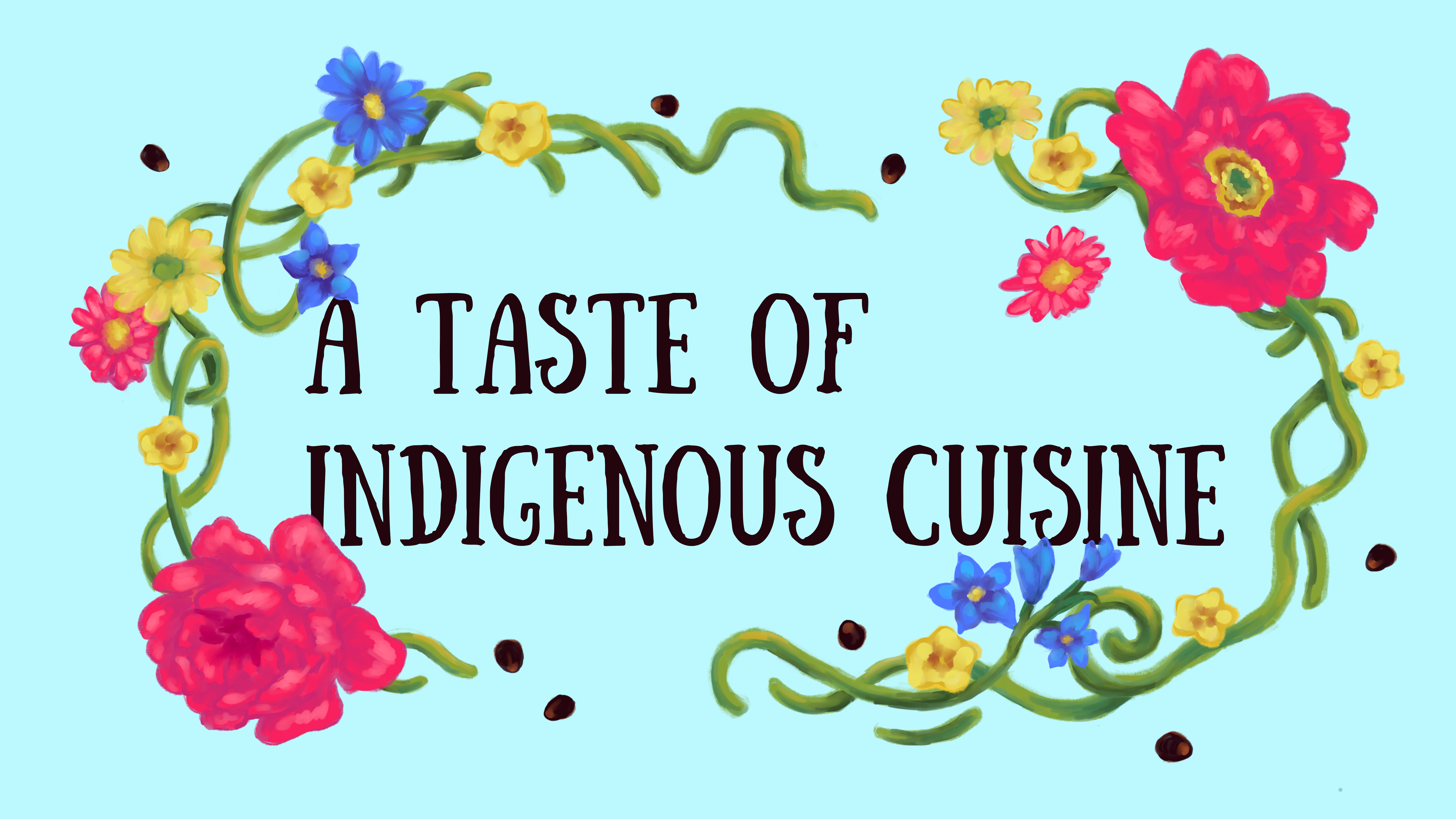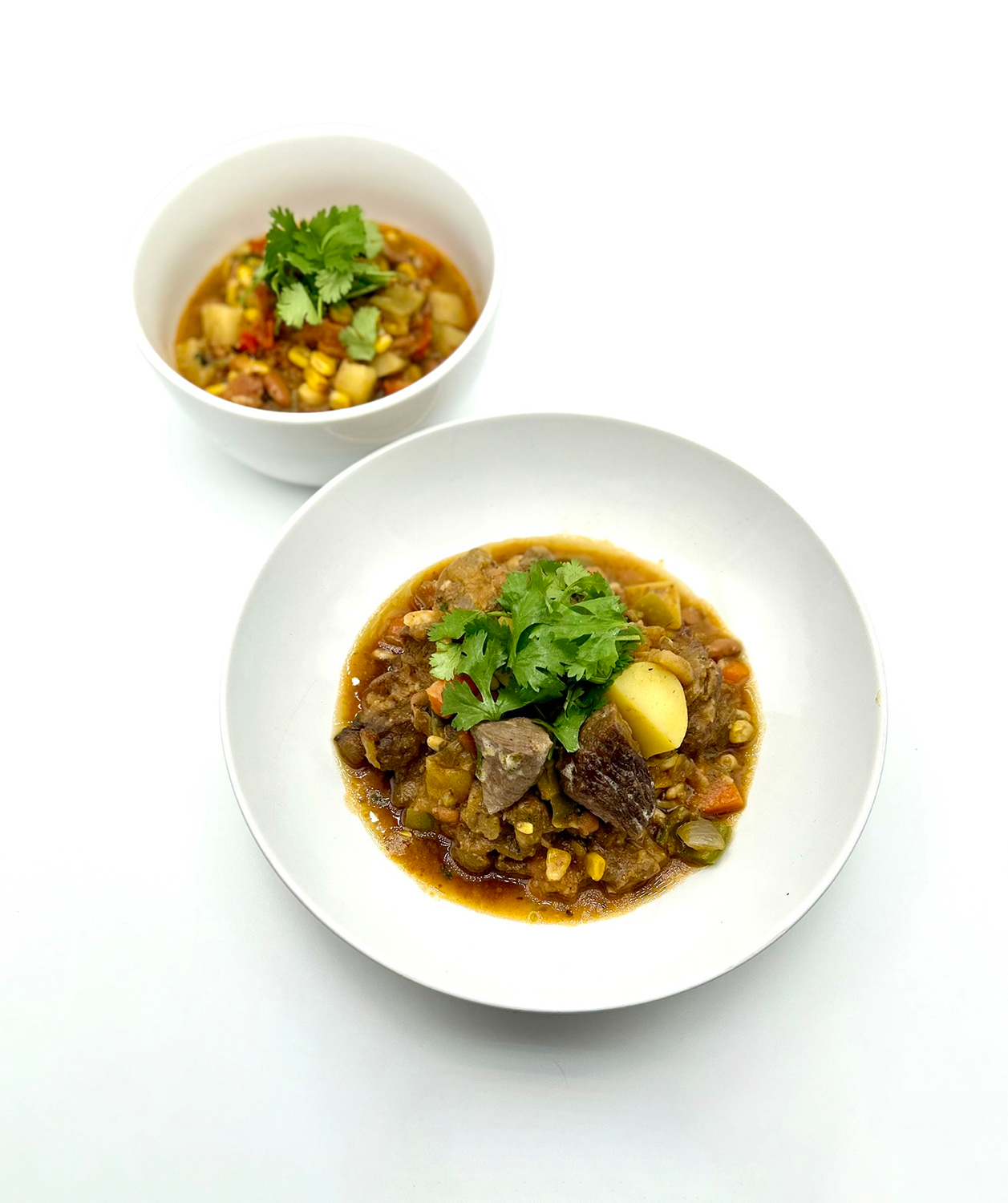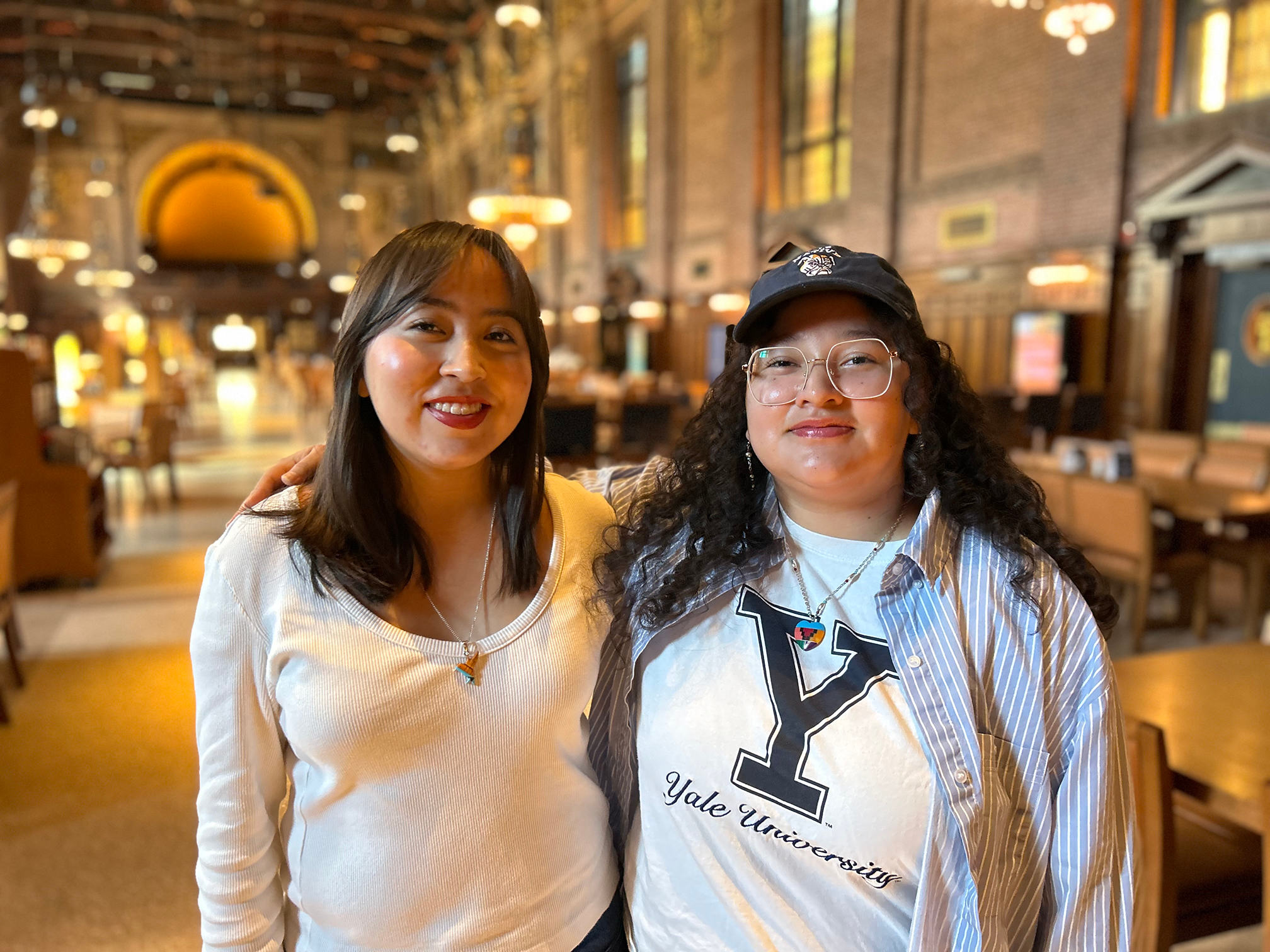A Taste of Indigenous Cuisine


Photo: William Wilson
Presented by the Native American Cultural Center, Yale Hospitality, and Yale Schwarzman Center.
On the Playlist
Today's playlist in Commons is curated by Aaron Cruz Warren '25, Kha'po Ownigeh (Santa Clara Pueblo People). Listen in Spotify!
On the Menu
- Lamb Stew (inspired by Mutton Stew)
- Three Sisters Stew
- Blue Corn Mush
Recipes for these dishes and more can be found in The Modern Navajo Kitchen: Homestyle Recipes that Celebrate the Flavors and Traditions of the Diné by Alana Yazzie.

Taylor Dineyazhe '27 and Mara Gutierrez '25
Mara Gutierrez ’25
I am Diné, a member of the Navajo Nation, with most of my family in Texas and my grandma in Cajon Mesa, Utah. When I visit my grandma, I enjoy traditional foods like mutton stew and blue corn mush. These foods are culturally significant to me.
My grandma often prepares mutton stew for large family gatherings. When I was younger, my grandma and other family members would butcher sheep together. Nowadays, she uses frozen mutton, cutting it into pieces and cooking it in a large slow cooker. As a child, I wasn’t fond of mutton stew; I would pretend to eat it, dipping my frybread or náneeskaadí — tortilla flatbread — in the broth instead. But now my taste buds have changed, and I look forward to having stew whenever I visit my grandma.
Náneeskaadí has always been a favorite of mine. I enjoy it plain, with butter, or alongside a stew. Another cherished dish is blue corn mush, which my grandma often makes. Its consistency varies, ranging from pudding to drinkable. When my grandma made it during cold winter breaks, I would guzzle it down like hot chocolate, savoring its sweetness and warmth.
These traditional foods not only nourish me but also connect me to my heritage and family history, remind me of visits to my grandma’s house — heartfelt experiences.
Taylor Dineyazhe ’27
I am Diné, living in Gallup, New Mexico, and my family hails from Chinle, Arizona, within the Navajo Nation. Mutton stew evokes memories of significant events, like visiting my grandparents and welcoming long-distance family members home. Now, as a student residing in New Haven, Connecticut, I don’t go home as often as I’d like, so when I do, I’m often the one for whom the mutton stew is made.
Growing up, I witnessed the collective effort that goes into preparing mutton stew. It’s not just one person cooking; it’s a group of loving family members and friends working together. It’s through this gathering of family and friends where you can truly taste the love and care in the dish. I recall my aunts gathered around the oven, sweating in the heat, their hard work resulting in something delicious. That sense of togetherness and the joy of sharing a meal is something I miss deeply.
I remember visiting my grandparents' house, where I’d sneak out of bed to find my grandma making blue corn mush for us early in the morning before we went to school. She would explain its significance to our Navajo heritage and would recall times during her childhood when she had it. Years later, in high school, I learned to make traditional recipes with my grandma. And in recent years, we’ve been exploring modernized blue corn dishes like cupcakes and cookies.
Mutton stew and blue corn mush represent more than just food; they embody the warmth of family and tradition and remind me of home.
Respect one another, support one another, bring your gift to the world and receive the gifts of others, and there will be enough for all.
Learn more:
Seeds gifted to the Yale Sustainable Food Program by indigenous seedkeepers are stewarded annually by students and community members at the Yale Farm. Anyone interested in learning from the Three Sisters as they grow can visit them in the field during the summer and fall. Students who would like to engage further with topics in indigenous foodways should consider taking ER&M 240 Introduction to Food Studies and ER&M 316 Indigenous Food Sovereignty with Dr. Hiʻ’ilei Hobart, Assistant Professor in Ethnicity, Race & Migration.
Illustration by Emma Slagle ’26, Kānaka Maoli